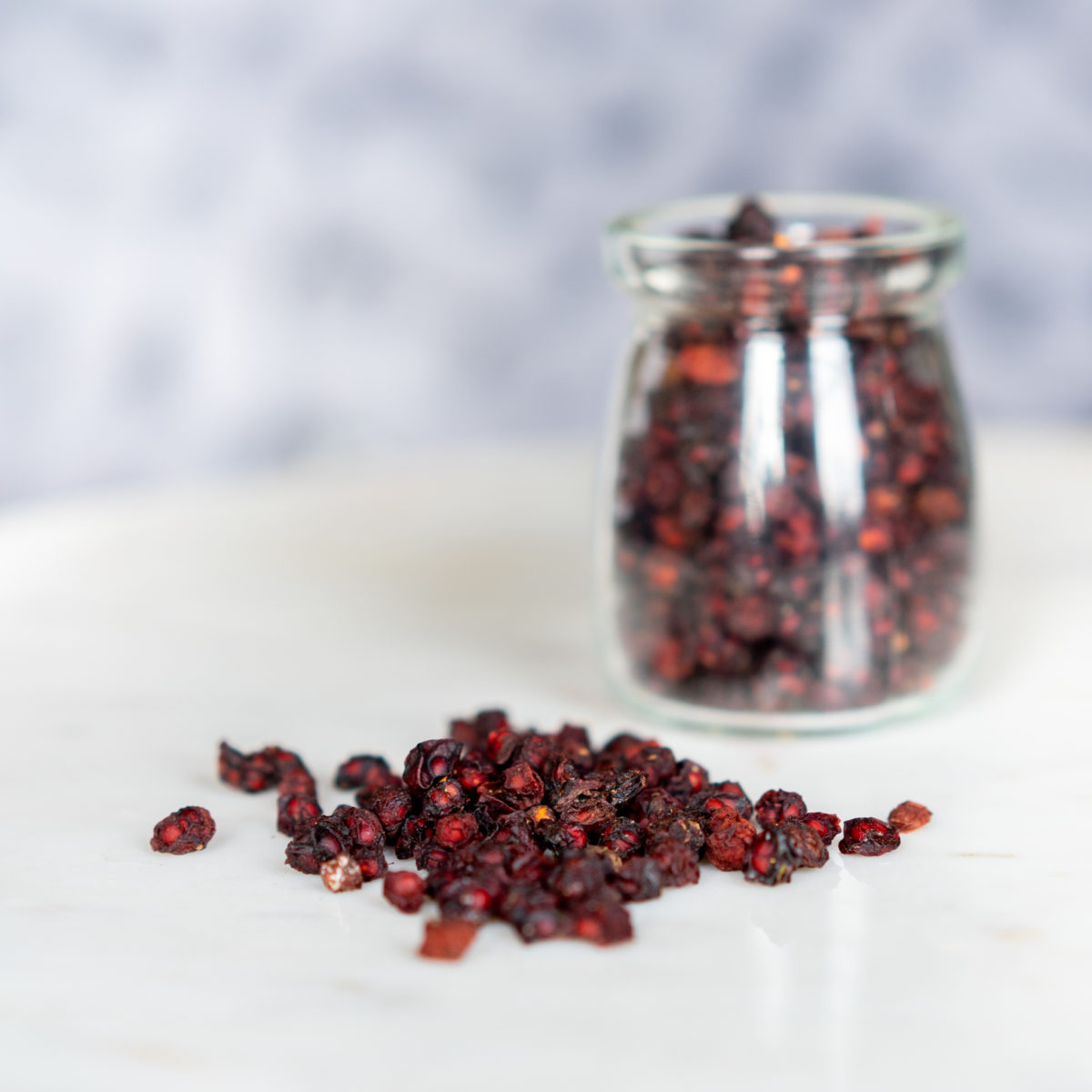
COMMON NAME (Chinese Name)
Schisandra (Wǔ Wèi Zi)
BOTANICAL NAME
Schisandra Chinensis
USES
Schisandra berries are classified in Chinese medicine as an herb that stabilizes and binds, hence its use for stopping diarrhea, coughing and spontaneous sweating. The berries are categorized as warm and sour and affect the Heart, Kidney, and Lung meridians. Less formally, schisandra is known as having all five tastes, with lesser pungent, salty, sweet, and bitter properties. It is an adaptogen.
While it is sometimes difficult to authenticate historical claims about herbal remedies’ medicinal functions, many of the most popular traditional medicinal uses for Schisandra have been demonstrably and repeatedly verified.
Recent studies have underscored the validity of Schisandra supplementation as an antimicrobial, antiviral, antioxidative, anti-inflammatory, anti-cancer, and hepatoprotective therapy. As a result of these properties, oral use of Schisandra fruit extracts is an effective treatment for mouth/dental ulcers and infections, stomach ulcers, and gastric infections. Moreover, drinking Schisandra fruit teas or eating the fruit decreases body fat and reduces fat tissue mass. Regular topical application of Schisandra extracts moisturizes, smooths, and soothes skin while also fighting the visible effects of sun damage and aging and treating fungal infections. In addition to its standard application to childbirth, this can also help alleviate irregular or absent periods. Modern empirical evidence emphatically supports the claim that Schisandra fruit decoctions are helpful aids during childbirth, as these tinctures have been found to stimulate uterine contractions and increase uterine tension regardless of pregnancy status. What’s more, taking Schisandra berries prior to pregnancy (and discontinuing them immediately upon conception) may help strengthen reproductive organs and increase the chances of conception and successful full-term pregnancy.
PREPARATION & ADMINISTRATION
The fruit produced by mature Schisandra plants appear most often in both traditional and contemporary medicinal applications, but are also eaten fresh or dried. These fruits are harvested, dried, and decocted for most medicinal uses. Though the leaves are now known to have even greater antioxidant properties than fruit extracts, Schisandra leaf extracts and other supplements are still relatively uncommon.
PRECAUTIONS
People who are pregnant should not take Schisandra unless directed by a physician or midwife, as it can cause and impact progress through labor. Contraindications for use also include epilepsy, peptic ulcers, high intracranial pressure, and high blood pressure. If you are already over-stimulated or emotionally excited (due to anxiety or drinking coffee, for example) you should avoid taking Schisandra supplements, as they have a dramatic stimulating effect that can exacerbate these conditions.
You should consult with a certified herbalist, physician or other qualified healthcare professional before taking Schisandra.
REFERENCES
Chen, John, Chen, T & Cramton, L. Chinese Medical Herbology and Pharmacology Art of Medicine Press, Inc. City of Industry, CA USA. 2003. 1327 pp ISBN: 0-9740635-0-9 http://aompress.com/herbology
Maizes, Victoria. “Preconception Counseling and Fertility.” Integrative Medicine (Fourth Edition), Elsevier, 28 Apr. 2017, https://www.sciencedirect.com/science/article/pii/B9780323358682000517.
Mocan, Andrei, et al. “Comparative Studies on Polyphenolic Composition, Antioxidant and Antimicrobial Activities of Schisandra Chinensis Leaves and Fruits.” Molecules, vol. 19, no. 9, 2014, pp. 15162–15179., doi:10.3390/molecules190915162.
Panossian, Alexander & Georg, Wikman. (2008). Pharmacology of Schisandra chinensis Bail.: An overview of Russian research and uses in medicine. Journal of ethnopharmacology. 118. 183-212. 10.1016/j.jep.2008.04.020.
Szopa, Agnieszka, et al. “Current Knowledge of Schisandra Chinensis (Turcz.) Baill. (Schisandra) as a Medicinal Plant Species: a Review on the Bioactive Components, P11, no. 5, June 2016, doi:10.1371/journal.pone.0154731.
